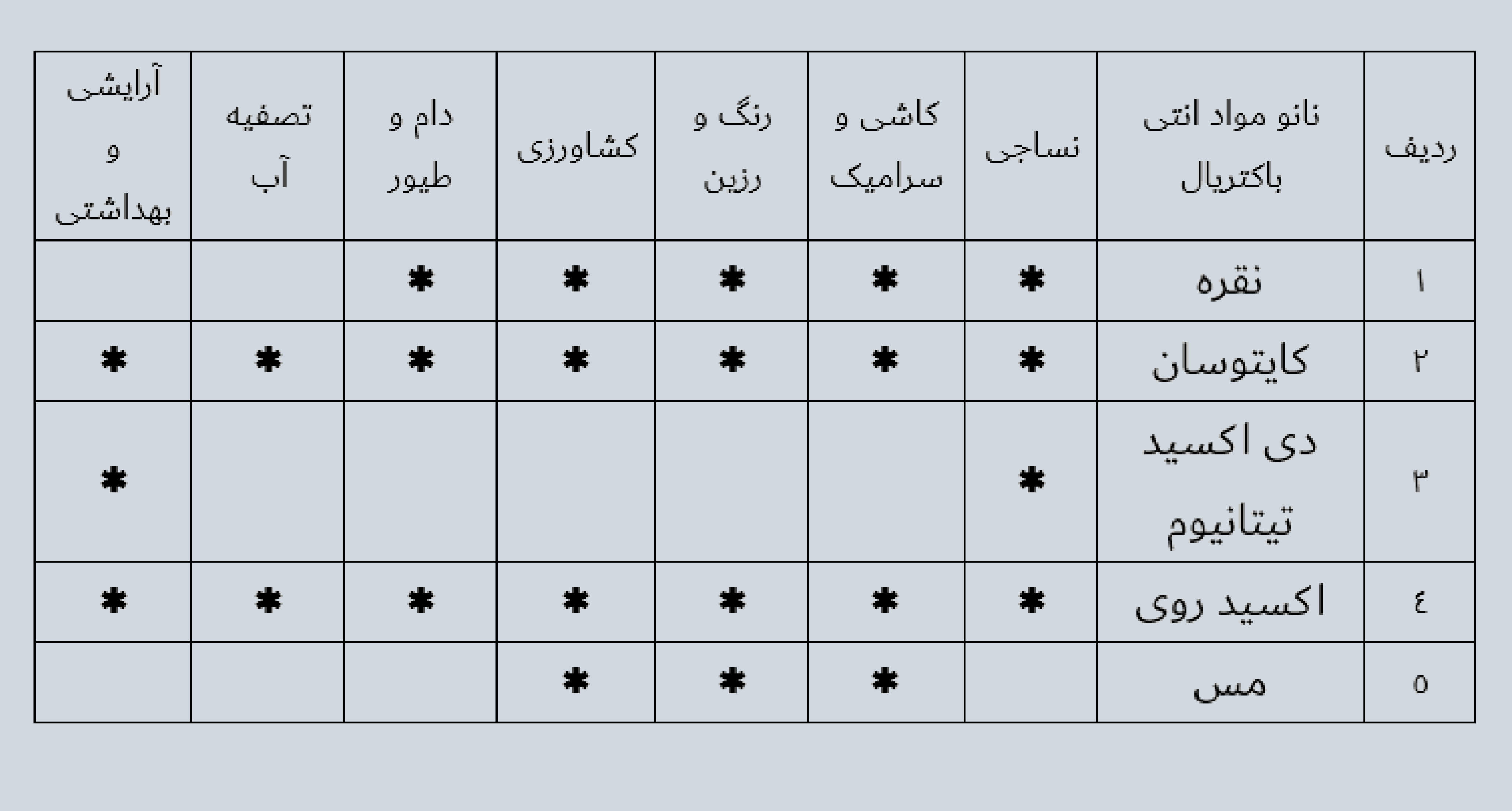Lotus - Kleanz:
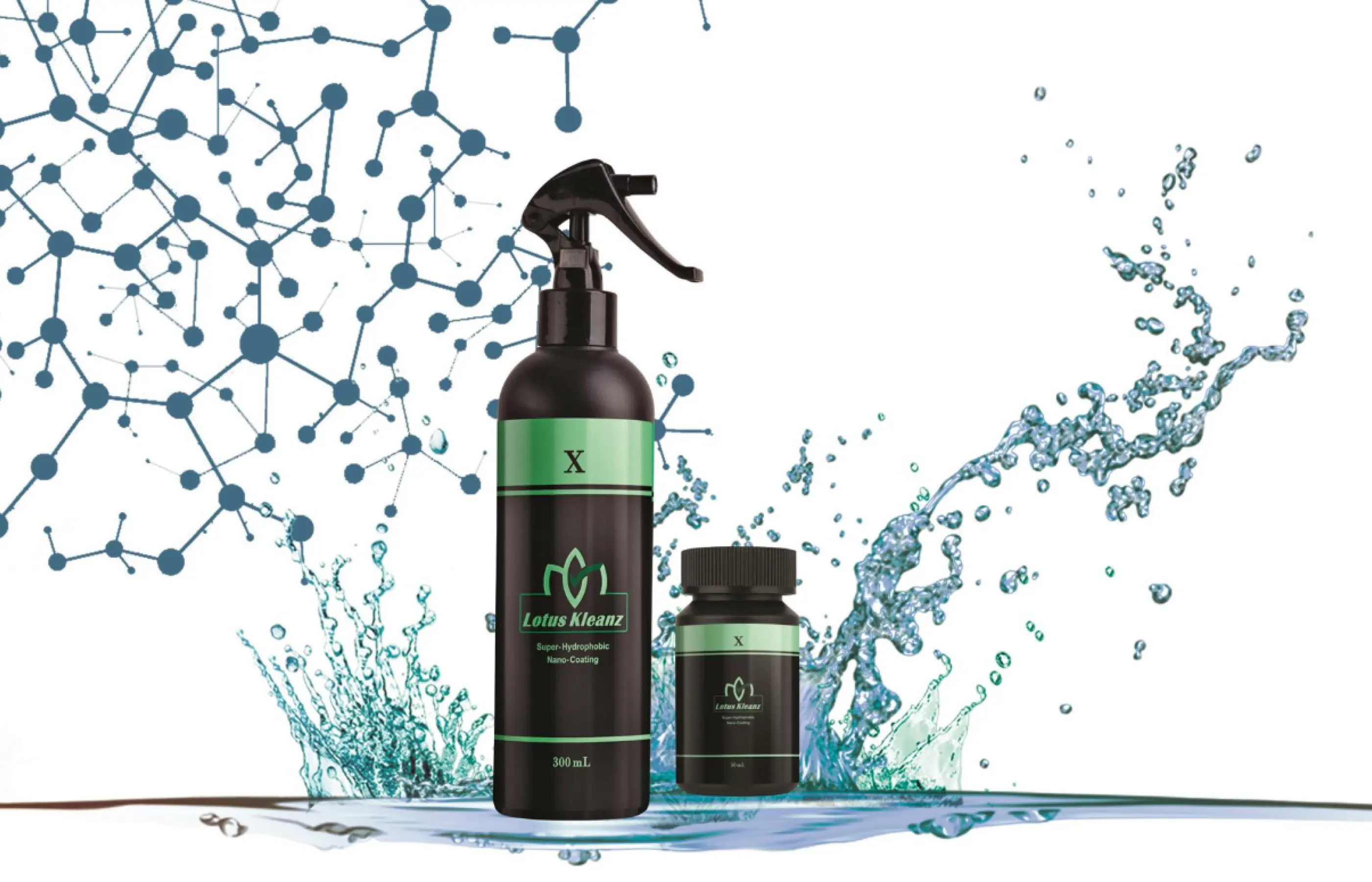
Definition of Hydrophobicity and Mechanism of Action
Super-hydrophobicity is a physical phenomenon in molecules that occurs naturally in various materials or can be artificially created.
Today, the use of hydrophobic coatings has gained significant attention. The mechanism of these coatings is inspired by the lotus effect observed in the lotus leaf. The lotus is an aquatic plant that grows in wetlands. Its leaves are typically free of contaminants, and even if dirt settles on their surface, it is quickly washed away by rain, leaving them clean and shiny.
Water absorption on porous surfaces generally occurs through capillarity. When a liquid can wet a solid surface, it spreads over the surface, increasing its specific area. The solid's surface energy opposes this increase, acting to reduce the contact area. The resulting tensile force causes the liquid to rise in the capillary, forming a contact angle between the liquid and the capillary wall.
For wetting liquids, this angle is less than 90 degrees. However, if the liquid cannot wet the capillary surface, the liquid level inside the capillary will be lower than the surrounding liquid level. By coating the capillaries with hydrophobic agents such as silicones with low surface tension, the surface energy between the capillary wall and the liquid increases. This results in a larger contact angle within the cavity, creating hydrophobic properties.
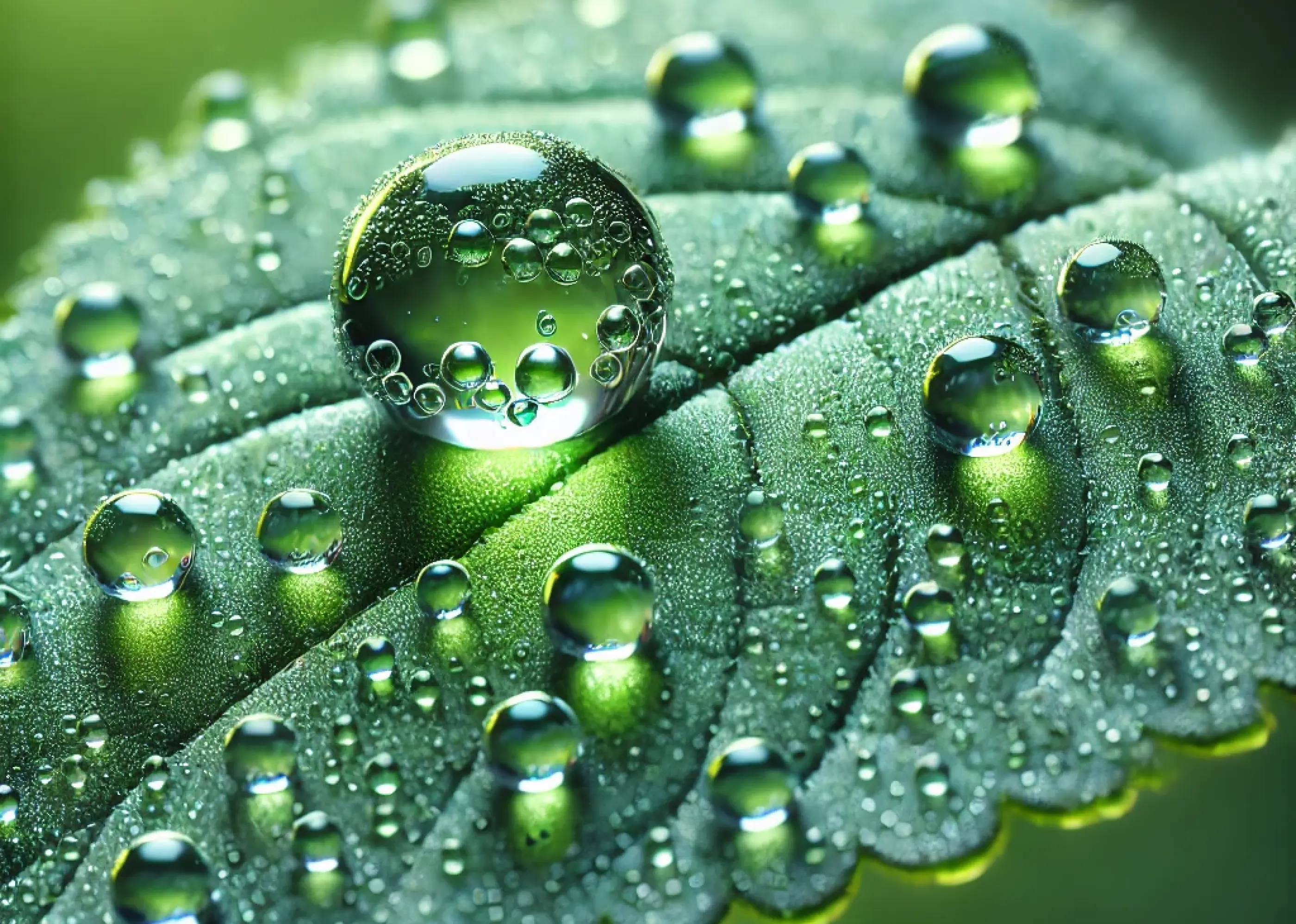
Definition of Hydrophobicity and Mechanism of Action
The emergence of nanotechnology has revolutionized various industries and improved the quality of life, leading to its growing influence across fields such as medicine and diagnostics, pharmaceuticals, textiles, construction and public spaces, automotive and industrial machinery, environmental protection, agriculture, cosmetics, and more.
To address challenges in these industries, Zist Shimi Azma Roshd has developed solutions, including the synthesis of super-hydrophobic coatings. These coatings aim to tackle environmental and energy-related issues, contributing to economic efficiency and advancements in these sectors.
The knowledge-based company Zist Shimi Azma Roshd, operating under the brand name NanoZino, is one of the pioneers in nanotechnology in Iran. Through extensive research in recent years, the company has successfully synthesized products such as nanoparticles and developed hydrophobic and self-cleaning coatings for various industries, including glass surfaces, wooden surfaces, textiles, ceramics, flooring, carpets, paints, and resins.
By conducting thorough analyses and characterization, the company has achieved significant and practical results, contributing to energy optimization and conservation across these industries.
Advantages of Hydrophobic Coatings:
With hydrophobic coatings, we achieve surfaces that remain continuously clean, resistant to abrasion, scratches, UV radiation, sunlight, and moisture, while also offering a remarkably long lifespan.
Applications:
Hydrophobic self-cleaning surfaces allow us to maintain cleanliness and aesthetics continuously without energy consumption. Their special applications include:
• These coatings can be applied to substrates using various methods. For example, to create a hydrophobic coating on tiles and ceramics, nanoparticles can be added to the glaze or sprayed onto the fired tile surface. Utilizing nanotechnology, this product prevents water and moisture absorption in both standard and porcelain tiles, making them self-cleaning. Additionally, by preventing water penetration into grout lines, it improves the waterproofing of bathroom and wet area walls.
• Hydrophobic coatings in the textile industry can be applied to threads and fibers via spinning, dipping fabrics, or spraying on clothing after stitching. Hydrophobic coatings on garments reduce energy consumption and extend their lifespan, as they eliminate the need for frequent washing and reduce detergent use. In sportswear, these coatings remove sweat or excess water (in aquatic sports) or snow and rain from the clothing surface, making a significant impact in the industry.
This nanotechnology-based product forms a hydrophobic layer on fabrics, preventing water and liquids from penetrating the fabric's fibers, making it repellent. This layer also provides permanent protection for fabric colors against UV radiation and fading.
The coating can repel various liquids such as water, coffee, tomato sauce, oil, syrup, and other hot or cold liquids. It is suitable for hydrophobizing fabrics made from natural fibers (e.g., cotton, linen, wool), various garments like coats, pants, shirts, uniforms, formal dresses, and delicate fabrics like silk and chiffon. Additionally, it can be used for tablecloths, chair covers, wedding dresses, military uniforms, children's clothing, blankets, bed linens, and flags of all sizes.
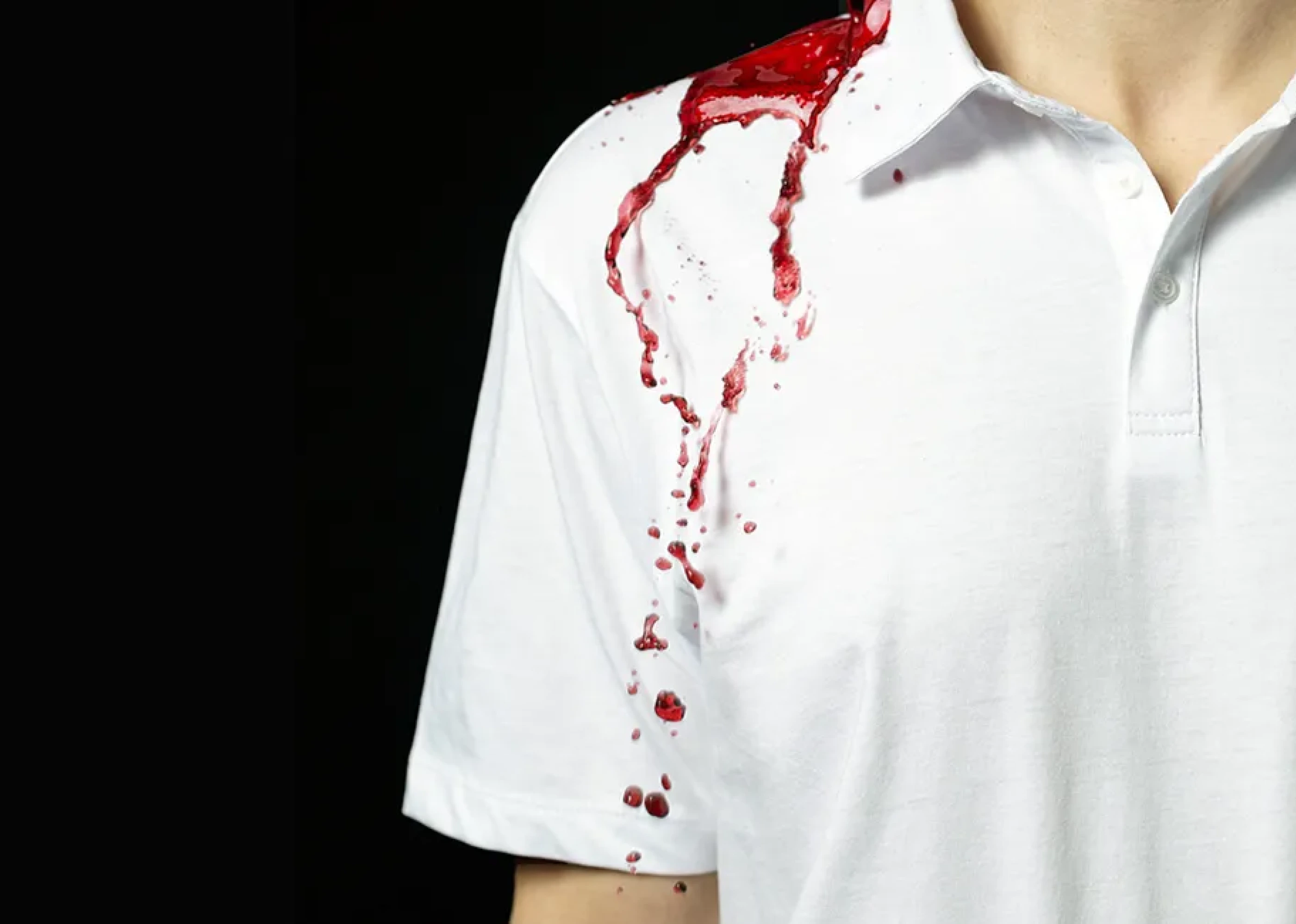
• Using hydrophobic coatings on concrete or glass building facades can significantly reduce the high annual costs of cleaning these surfaces. These coatings minimize financial losses and prevent water absorption, which leads to gradual damage to the facade.
One of the key characteristics of mineral construction materials, such as porous concrete, is their tendency to absorb water. This absorption causes exterior walls to fade and deteriorate quickly after rainfall. Protecting building facades from water damage is essential, and Zist Shimi Azma Roshd has developed solutions using water-repellent agents.
The hydrophobic facade coating is completely transparent and does not alter the building's appearance. It is easy to apply and can be completed quickly. The coating prevents external walls from staining, weathering, and developing efflorescence, mold, and other harmful reactions. Additionally, it is UV-resistant and unaffected by direct sunlight.
By protecting construction materials, these coatings significantly extend the lifespan of building facades.

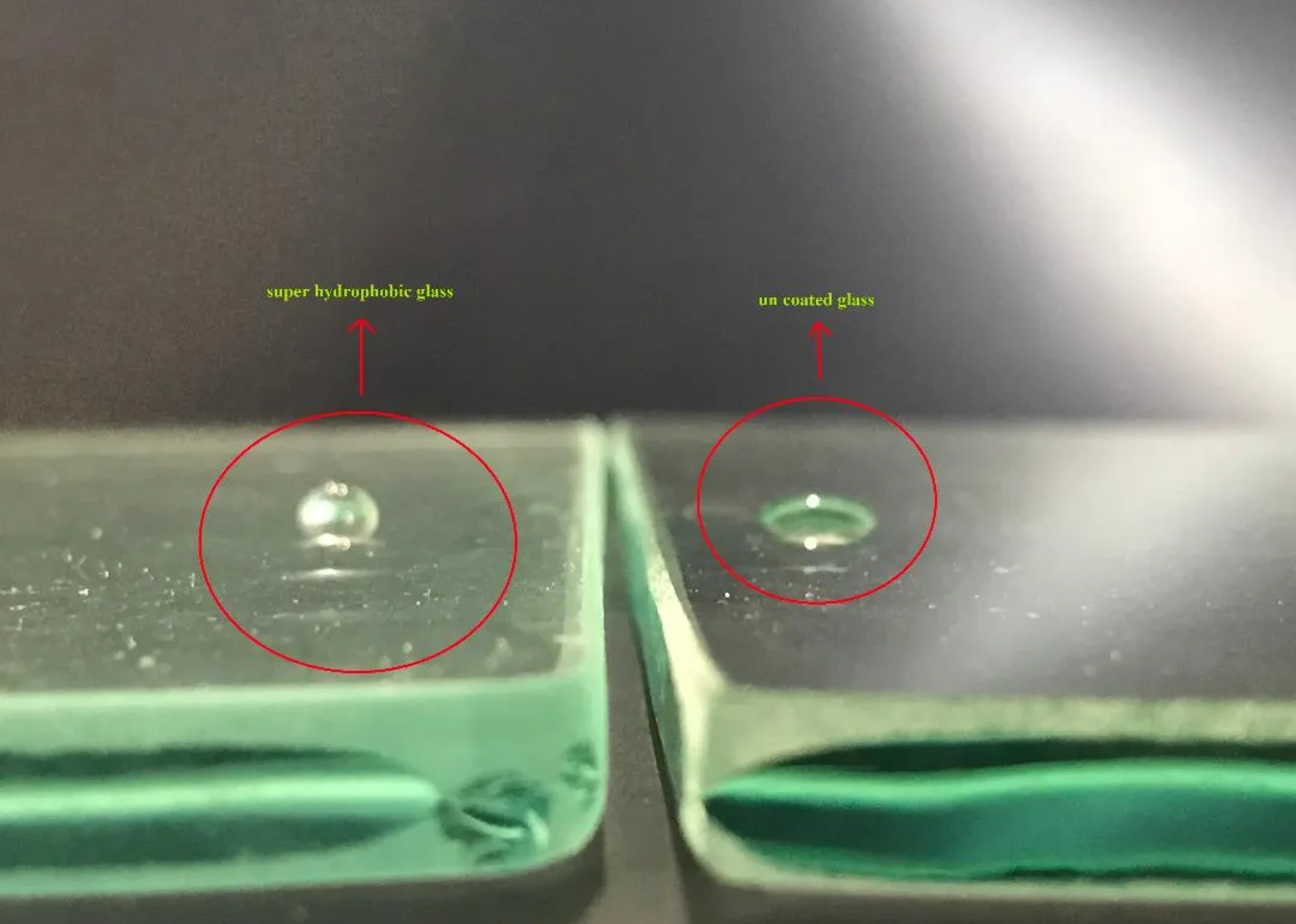
• Application for car windows, interior furniture, and even car floor mats, vehicle bodies, transportation wagons, and public transport vehicles:
In cities with acid rain or high pollution levels, washing vehicles consumes significant amounts of electricity, water, time, and money. Hydrophobic coatings solve these issues, ensuring a consistently clean vehicle.
With hydrophobic coatings on car windows, there is no need for windshield wipers during rain or snow, as raindrops roll off the glass automatically, keeping it clean. This product interacts with the glass surface, making it effortlessly self-cleaning.
Additionally, it prevents any fogging or cloudiness on the surface, allowing water droplets to roll off both the glass and body, removing dirt and contaminants. This results in significant savings in water consumption and frequent cleaning costs.
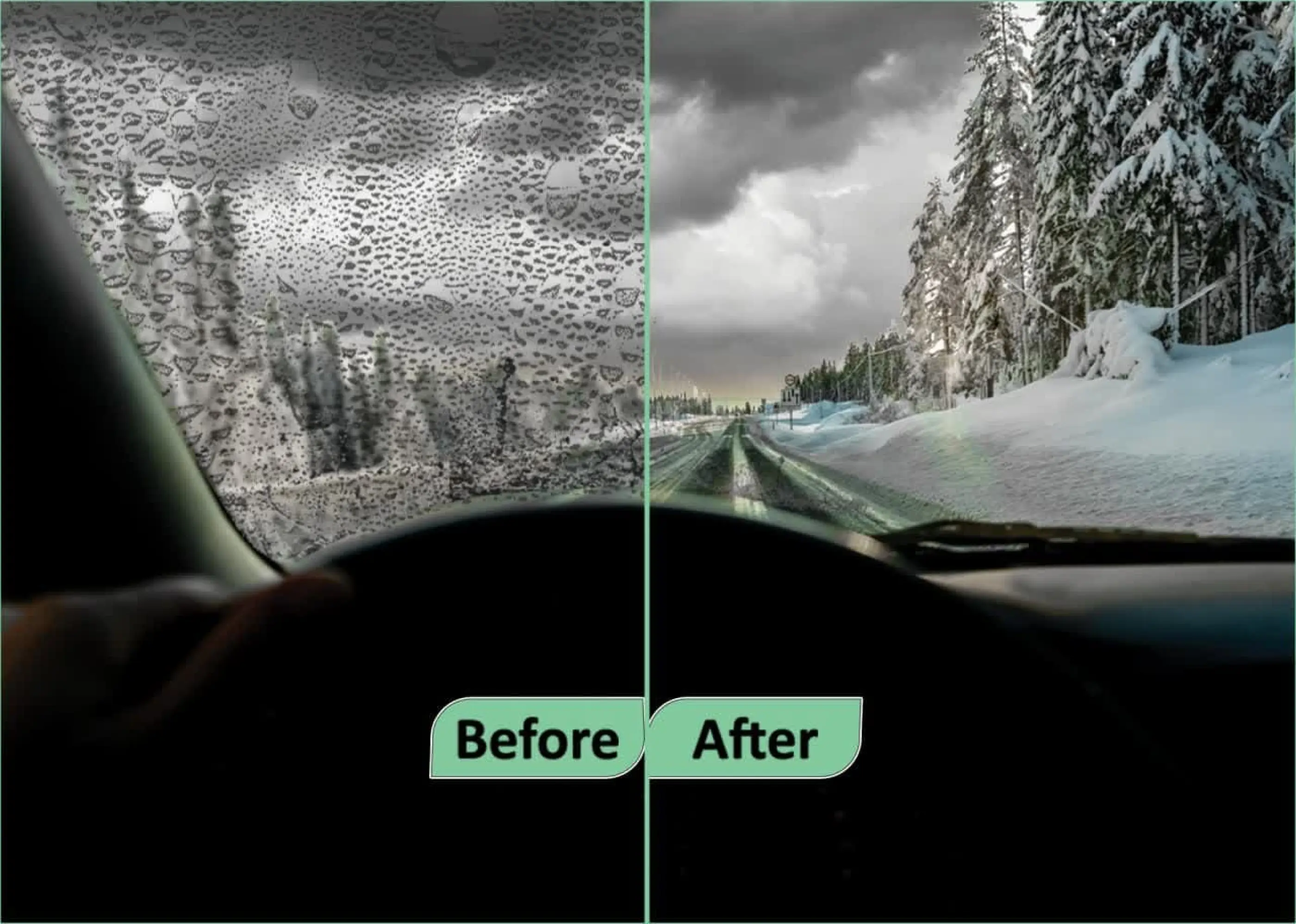
Cleanliness and shine have always been a concern for car owners.
This product creates a hydrophobic layer on the car's body, providing water repellency and acting as a protective shield. It adheres to the surface, preventing the car body and windows from getting dirty due to bird droppings, acid rain, and various pollutants.
• Nano paints are developed using nanotechnology, offering hydrophobic properties and significantly enhancing surface resistance to sunlight exposure.
• Moisture and environmental factors significantly impact wood quality.
Key damages caused by moisture include cracking, decay, and erosion. In the wood industry, particularly for items used in bathrooms, saunas, and jacuzzis, protective, hydrophobic, and waterproof nano coatings are essential. Without proper protective coating, wood deteriorates over time.
Nano protective coatings allow moisture exchange while resisting water absorption and swelling. To preserve the appearance of wooden products for a lifetime, applying these coatings is recommended. They waterproof wooden surfaces without altering their appearance, maintaining breathability, and protecting them from water damage, ultimately extending their lifespan.
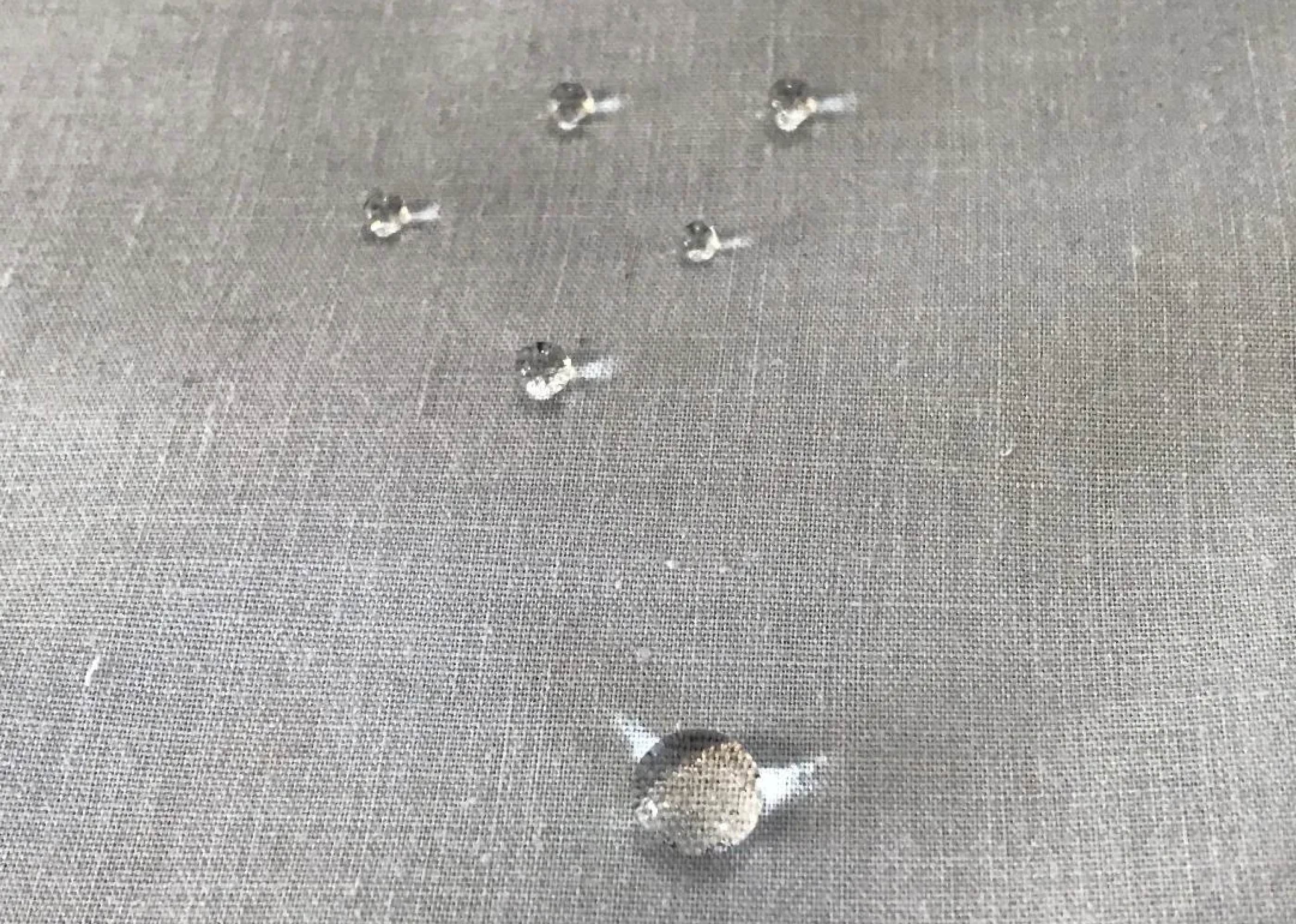
Antibacterial Nanomaterials (Disinfectants)
The surfaces we interact with are constantly exposed to the attraction, growth, and reproduction of various bacteria and fungi.
Chemical disinfectants have drawbacks, including toxicity to humans, animals, and other organisms, and usually provide only temporary antibacterial effects.
As a result, the use of non-chemical disinfectants such as nanoparticles is increasing. Antibacterial properties in nanomaterials are more stable. Antibacterial agents are crucial in the textile industry, water disinfection, odor removal from wastewater and environments, medicine, and food packaging.
Other applications of antibacterial products include medical and dental equipment sensitive to chemical compounds, hospitals, laboratories, clinics, schools, educational centers, kindergartens, children's play equipment, public restrooms, hotels, mosques, shrines, swimming pools, gyms, restaurants, and more.
Additionally, some of their most common applications include:
Textile Industry: Threads and fibers, underwear, socks, workwear, sportswear, military textiles, lab coats, medical gowns, carpets and rugs, blankets and bed linens, bandages.
Ceramics and Tiles: Various ceramic tiles for hospitals, swimming pools, hygienic spaces, public areas, livestock and poultry halls, silos.
Paints and Resins: For various public and hygienic spaces.
Antibacterial nanomaterials can be combined with various polymers such as spun, melt, paints, resins, glazes, and coatings.
Research has been conducted on the antimicrobial properties of silver, chitosan, titanium dioxide, zinc oxide, and copper compounds.
Each of these materials exhibits unique effects against bacteria. Scientists believe these nanoparticles can serve as suitable alternatives to antibiotics and chemical disinfectants. The figure below illustrates the bacterial death process facilitated by silver nanoparticles.
